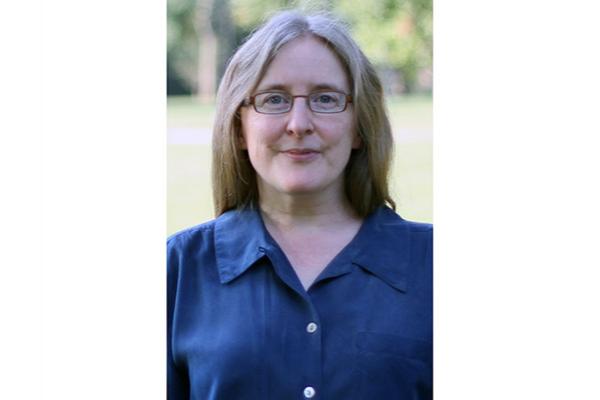Do Folklore and Security Studies Mix? Mershon Affiliate Says Yes

Mershon affiliate Dorothy Noyes, professor of English and comparative studies, has published a new book: Sustaining Interdisciplinary Collaboration: A Guide for the Academy (University of Illinois Press, 2017), co-authored with Regina Bendix and Kilian Bizer.
Sustaining Interdisciplinary Collaboration shows newcomers and veteran researchers how to craft associations that will lead to rich mutual learning under inevitably tricky conditions. Strikingly candid and always grounded, the authors draw a wealth of profound, practical lessons from an in-depth case study of a multiyear funded project on cultural property.
Examining the social dynamics of collaboration, they show readers how to anticipate sources of conflict, nurture trust, and jump-start thinking across disciplines. Researchers and institutions alike will learn to plan for each phase of a project life cycle, capturing insights and shepherding involvement along the way.
Because much of Noyes’s contribution to the book draws heavily from her work at the Mershon Center, we asked her about her long experience as a folklorist collaborating with scholars in international relations and security studies.
Q. How is your work in folklore studies informed by activities and events at the Mershon Center?
I’ve been at Mershon for almost as long as I’ve been at Ohio State because it offers such stimulating counterpoint to my own thinking. As a folklorist, I start with the ethnographic detail and work up to interpretation, comparison, and theory. The social scientists at Mershon often work in the other direction: That inspires me to join rigor to openness.
Learning from Mershon’s historians and political scientists has helped me to carry my interest in political performance into new arenas, such as cultural diplomacy. And I’ve learned how I and my students can explain our work better to others: This has made it easy for me to enter into interdisciplinary collaborations in Germany and elsewhere.
There isn’t a straight line of influence, but conversations at Mershon have been important for the framing of my current book project on the idea of exemplarity in liberal politics.
Q. How can folklore studies contribute to research and conversation in national security?
We are a “listening discipline”: Our starting point is what actors do and what they say about what they’re doing. In this way we sometimes see things that escape the notice of theory-driven research questions and more interventionist research methods.
This especially applies to the study of vernacular politics. Jokes and rumors and festivals can tell you which way the wind is blowing, often earlier and better than what people say to an interviewer. Of course this applies especially to conflict situations, under oppressive regimes, and for marginal populations.
Likewise, we pay attention to the forms and conventions of political expression, the traditional baggage that political language carries. Sometimes I think security studies proper can be too quick to infer attitudes from actions: The forms of expression come in between and have their own inertias.
And finally, contemporary ethnographers have learned to examine themselves as well as other people: not to take our own concerns and point of view for granted but to see them through the eyes of our interlocutors. This entails, of course, serious ethical obligations, based in consultation.
In part because of who’s funding and producing it, in part because of the kind of data sets available, I get the sense that security studies is very much formulated from the point of view of great powers. In the United States it often takes U.S. security frameworks for granted. That makes for blind spots.
Q. What kind of collaboration between folklorists and national security scholars would you like to see?
My new book is co-authored with a European ethnologist and a policy economist; it chronicles a six-year project that also involved people in social anthropology, agricultural economics, international law, and international relations. We were looking at the new policy slogan of “cultural property,” which got intergovernmental organizations, developing country governments, and lots of local actors excited at the turn of the millenium, but has been fairly disastrous in most implementations.
By the same token, other new policy ideas and security models can benefit from joint examination by those who know the ground well, those who understand the institutional environment, and those who can model outcomes. Our book recommends that such collaborations begin with a joint examination of the common sense of the problem as construed by its various stakeholders.
At Mershon we’ve organized truly illuminating interdisciplinary conferences on the counterinsurgency turn in the Afghan war and on the resilience turn in cultural policy, among other things. One of these days I’d like us to have a group conversation on the foundational concept of intervention, and I’ve been really happy to see our new year-end conferences on risk and now on war and media, even though I’ve had conflicts for both that kept me from attending!
Finding the time and collective will to follow up the conversations with collaborative research is the hard part.
